AVIC Lithium BatteryThe company's 17-year capacity is 2.5GWh, of which the ternary battery is about 0.21GWh and the lithium iron phosphate is 2.23GWh. Zhengzhou is the main production base.
Lithium Grid News: The lithium battery industry has entered the second half of PK. The head companies have accelerated their ability to seize the first-mover advantage of capacity distribution. With the expansion, the head company has ushered in value after the big waves, maintaining the industry's overweight rating.
Summary:
The lithium battery expansion competition has entered the second half, and the giant's vertical and horizontal competitiveness has continued to strengthen, maintaining the industry's overweight rating. We believe that the main battlefield of power lithium batteries will be concentrated among the top ten power lithium battery companies. The strategic planning, technical route, and capacity deployment of the CR10 enterprise have fully demonstrated that the strength of capital and market expansion will be used to promote the formation of the industry. Maintain industry overweight rating.
The square has become mainstream, and the proportion of soft packs has increased rapidly. At the end of 2018, the total production capacity of the whole industry will reach 182GWH. According to our industry analysis, the square production capacity reaches 93.5GWh, the cylindrical production capacity is 50.5GWh and the soft package capacity reaches 38GWh, accounting for 51%, 28% and 21% respectively. 1 square production capacity accounted for half, has become the most important technical route, capacity expansion rate reached 36%, square enterprises' production capacity is mainly concentrated in CATL, BYD, Guoxuan, Lishen, etc., only these four production capacity in 2018 Up to 71.5GWh, accounting for 85.6%, up 4% year-on-year. 2 The cylinder is undergoing technological upgrading. The cylindrical plant has the highest capacity base, and its main expansion is shifting from 18650 to 21700. The overall growth rate has slowed down. 3 soft pack batteries quickly rise due to high energy density, but due to the high technical threshold, the technical principle of square and cylinder is quite different. Therefore, the expansion is mainly concentrated in soft pack leading enterprises such as Fueng Co., Ltd., with an overall production capacity of 38GWh. The production capacity of Guoneng and Kaina reached 13GWh/13GWh/5.8GWh, respectively, accounting for nearly one point higher than the same period of last year.
The effects of industrial clusters have been highlighted. Enterprises represented by giants such as CATL, Guoxuan, BYD, Lishen, etc., by strengthening the production capacity and technology research and development of more than 10 domestic mainstream battery companies, are strengthening the technology research and development on the high-nickel ternary lithium battery, on the other hand to strengthen Supporting the production capacity of the base of the car company, reducing the transportation radius and effectively reducing the cost, and achieving a tight supply capacity. Industrial clusters have laid the foundation for the market, and future industrial competitions will win in well-established enterprises.
The lithium battery industry cluster base and supporting construction around the car factory are underway. Beiqi supply chain: CATL, Guoxuan Hi-Tech, Fueng Technology, Pride and so on. Beiqi New Energy Automobile Manufacturing Base is Daxing Mining Town, and Pride is a core pack supplier in the same industrial zone. The battery company that is currently entering the supply system is investing in the production of power lithium batteries in Shunyi District, closely surrounding the production capacity of BAIC New Energy. Others such as CATL and SAIC are also actively reducing shipping distances and accelerating production.
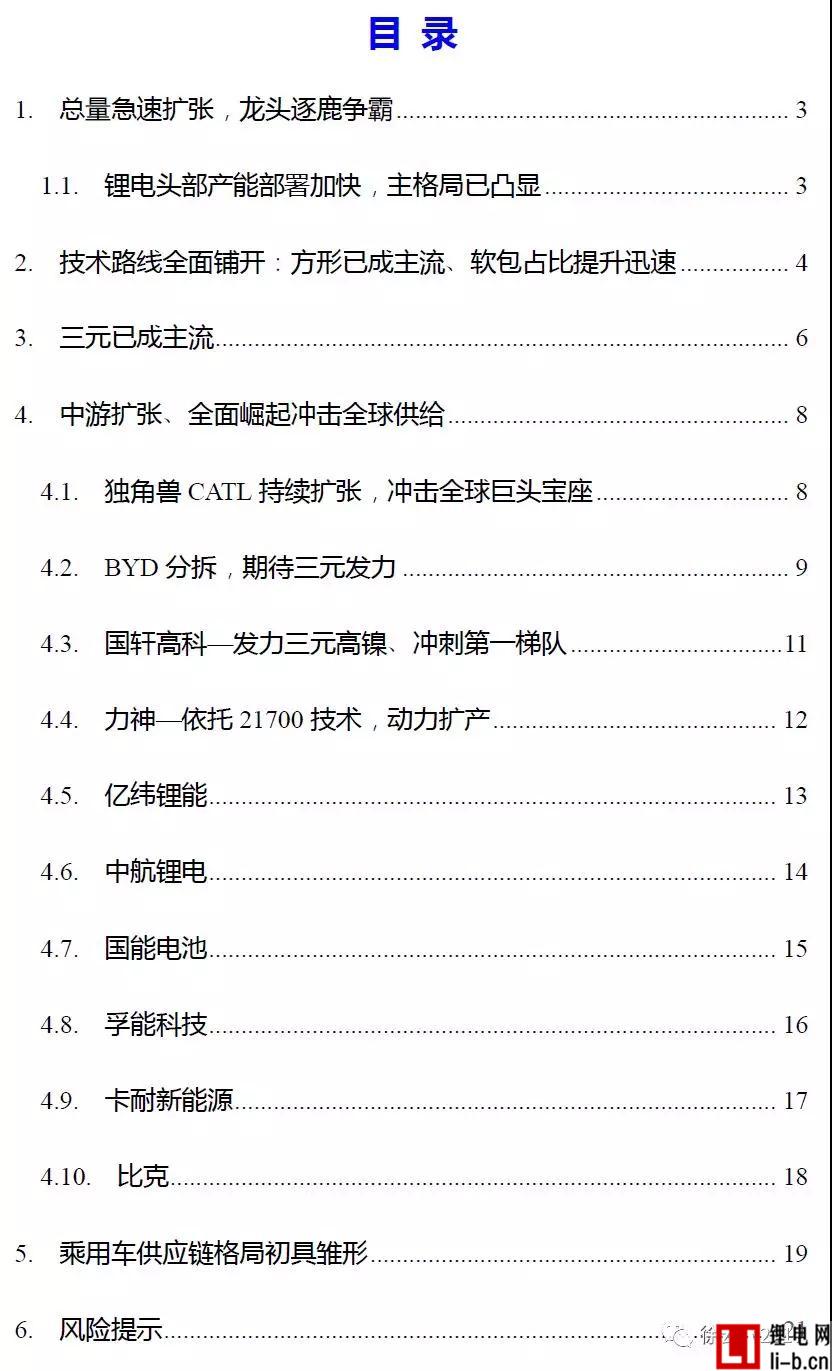
1. The total amount is rapidly expanding, leading the competition
1.1. Lithium-ion head capacity deployment accelerated, the main pattern has been highlighted
The leading expansion competition has been halfway through, and the head company has outstanding competitiveness and maintains an industry overweight rating. We believe that the main battlefield of power lithium batteries will be concentrated among the top ten power lithium battery companies. The strategic planning, capacity deployment and supporting base construction progress of CR10 enterprise lithium-ion enterprises not only reflect their capital strength and market expansion strength, but also indicate the acceleration of the formation of the lithium battery industry. By comparing the production capacity and technology research and development of more than 10 domestic mainstream battery companies, we believe that the effect of industrial clusters has been highlighted, and industrial clusters have laid the foundation for the market. The future industry competition will be in the well-developed head enterprises. Win. The increase in industry concentration has accelerated the value of the head company and maintained the industry's recommended rating.
The proportion of head capacity has increased, and the living space of SMEs continues to be under pressure. In the past 17 years, the expansion of power battery leaders led by Ningde era and BYD was higher than the industry average. CATL (17GWh), BYD (16GWh) and Guoxuan Hi-Tech (10GWh) continued to rank among the top three, and Beijing Guoneng, Fu Neng Technology, and Tianjin Lishen followed closely, which led to a further increase in industry concentration. The power lithium battery industry capacity CR10 index increased from 44% in 2016 to more than 52% in 2017. The top ten installed capacity in the first 18 years of the year are CATL, Guoxuan Hi-Tech, BYD, BAK Battery, Far East Foster, Guoneng Battery, Wanxiang, Zhihang New Energy, Fueng Technology, and Haguangyu.
The passive expansion of production capacity is nearing the end, and the average production capacity of SMEs with a total capacity of 41% is about 2.5GWh, which is further widened from that of large enterprises. Judging from the capital expenditures of companies such as Aoyang Shunchang, Far East Foster, and Nandu Power, there is basically no plan to continue investing. The 17-year investment is not as good as the previous planning targets. As the concentration of production capacity is rising rapidly, SMEs are limited by capital and technical personnel reserves, and capacity expansion tends to be rationally stagnant, which is relatively conservative in overall capacity planning. The expansion of current production capacity is not limited to the local government resources of the enterprise, but more is the deployment within the transportation radius centered on the car-enterprise customers for the supporting projects.
2. The technical route is fully rolled out: the square has become mainstream, and the proportion of soft packs has increased rapidly.
In 2017, the three types of battery capacity of square, cylindrical and soft packs reached 68.5GWh, 63GWh and 23GWh, respectively, accounting for 45%, 41% and 15% respectively. At the end of 2018, the total production capacity of the whole industry will reach 182GWH. According to our industry analysis, the square production capacity reaches 93.5GWh, the cylindrical production capacity is 50.5GWh and the soft package capacity reaches 38GWh, accounting for 51%, 28% and 21% respectively.
From the trend point of view, 1 square production capacity accounted for half, has become the most important technical route, capacity expansion rate reached 36%, square enterprises' production capacity is mainly concentrated in CATL, BYD, Guoxuan, Lishen, etc., only 4 The total production capacity reached 71.5GWh in 2018, accounting for 85.6% of the total, up 4% year-on-year. The expansion of these companies is relatively large, and it is the main driving force for the high growth rate of the square.
2 Cylindrical capacity expansion is the fastest, with a growth rate of 8%. Our analysis believes that the main reason is that the cylindrical enterprises are fiercely competitive and are currently undergoing technological upgrading. The cylindrical plant has the highest capacity base, and its expansion main force is changing from 18650 to 21700. The speed has slowed down. 3 soft pack batteries quickly rise due to high energy density, but due to the high technical threshold, the technical principle of square and cylinder is quite different. Therefore, the expansion is mainly concentrated in soft pack leading enterprises such as Fueng Co., Ltd., with an overall production capacity of 38GWh. The production capacity of Guoneng and Kaina reached 13GWh/13GWh/5.8GWh respectively.
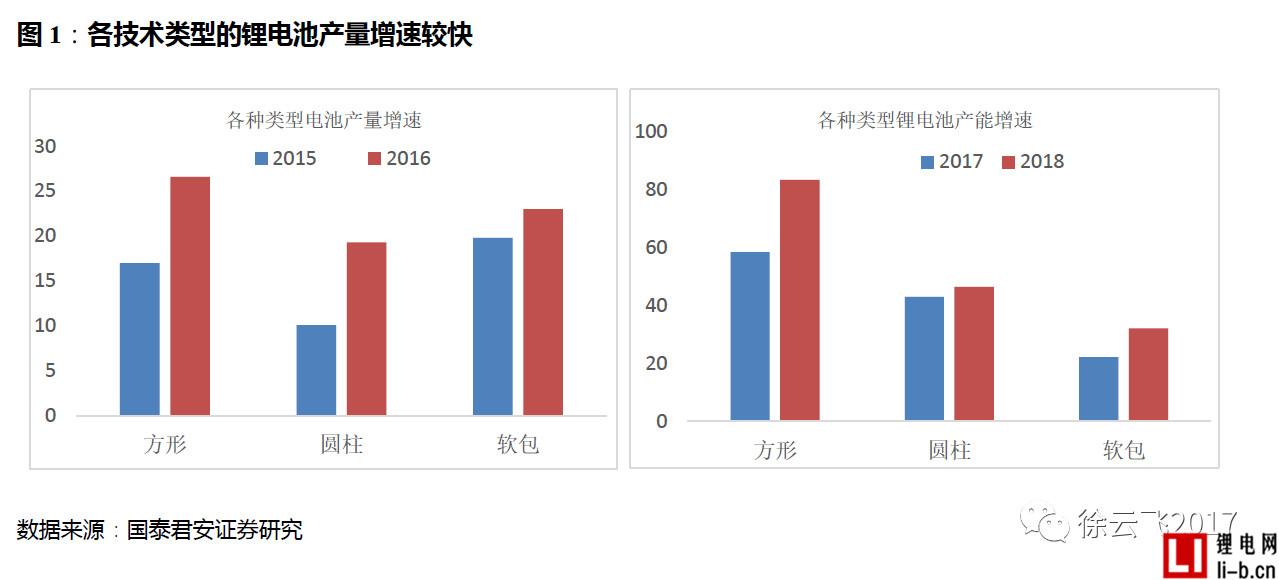
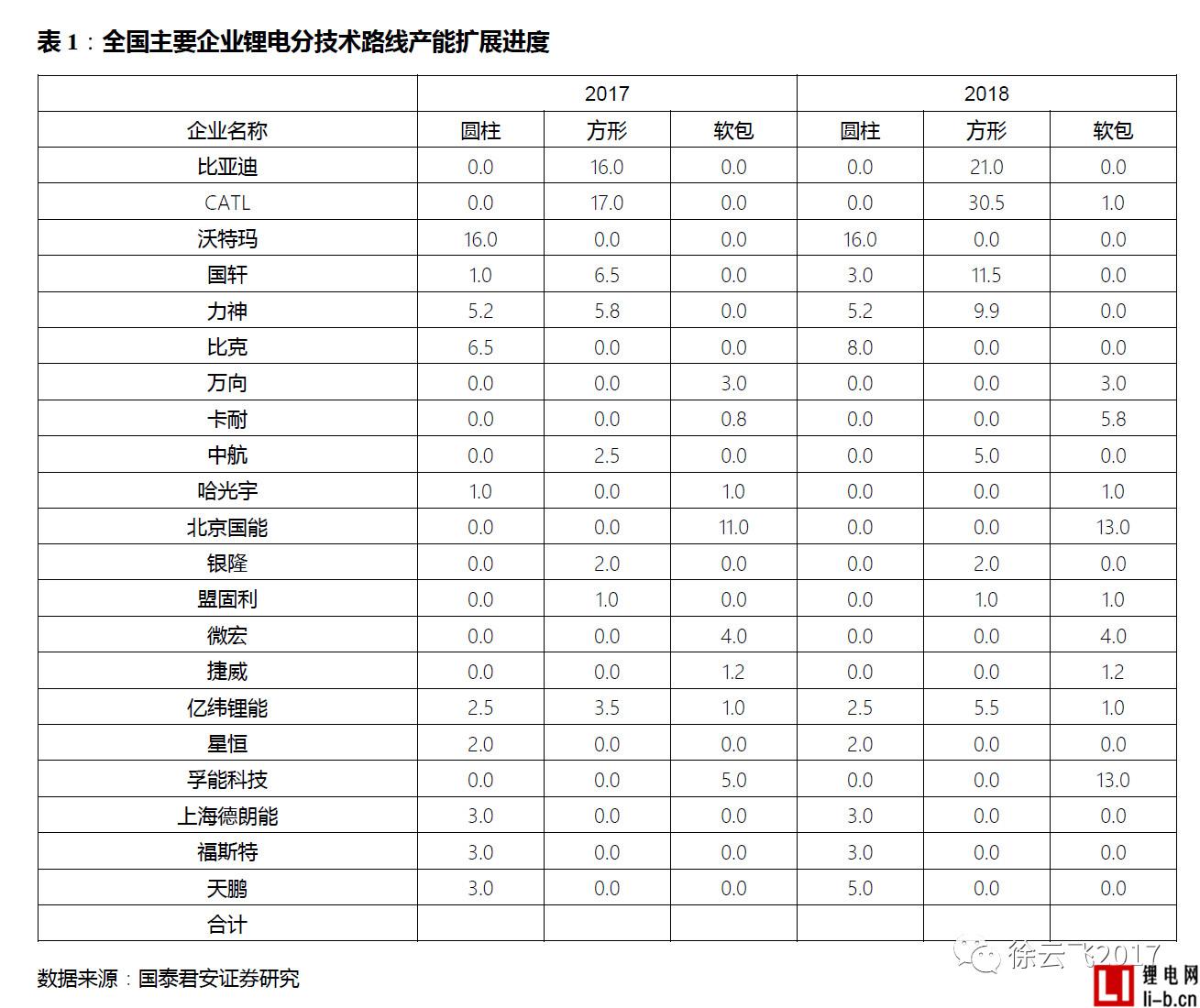
3. The ternary has become mainstream
The newly added capacity is concentrated in the ternary lithium battery , accounting for 46%. The mainstream trend of the expansion of the ternary expansion of the industry. By the end of 2017 it is expected to lithium iron phosphate battery production capacity of 73.7GWh, accounting for 48 per cent of total capacity, compared with 16 years accounting for up to 20 percentage points. In 2018, from the current enterprise planning, the continuation of the expansion of ternary lithium battery expansion will increase the production capacity of ternary batteries to 112.3GWh, and the proportion will increase to 62%.
In addition, observing the head company, BYD has increased its 5GWh in the ternary expansion in 18 years due to insufficient power in the ternary lithium battery in the previous period. The industry leading CATL ternary capacity has been increased from 8.5GWh to 19.5GWh, and the newly added capacity has reached 11GWh, which has met the supporting planning requirements of many passenger car companies.
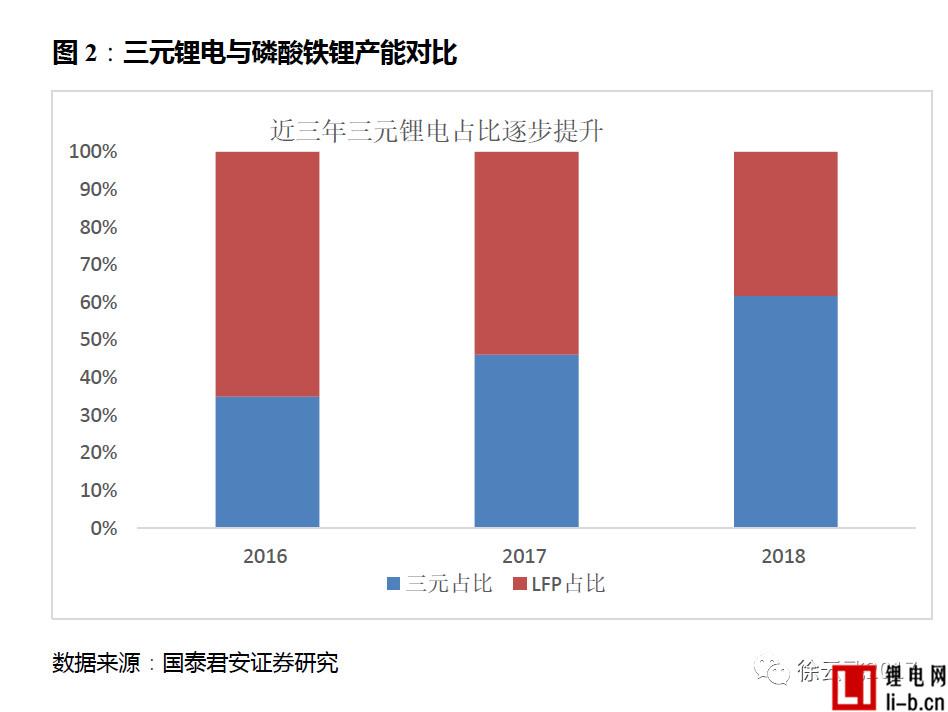

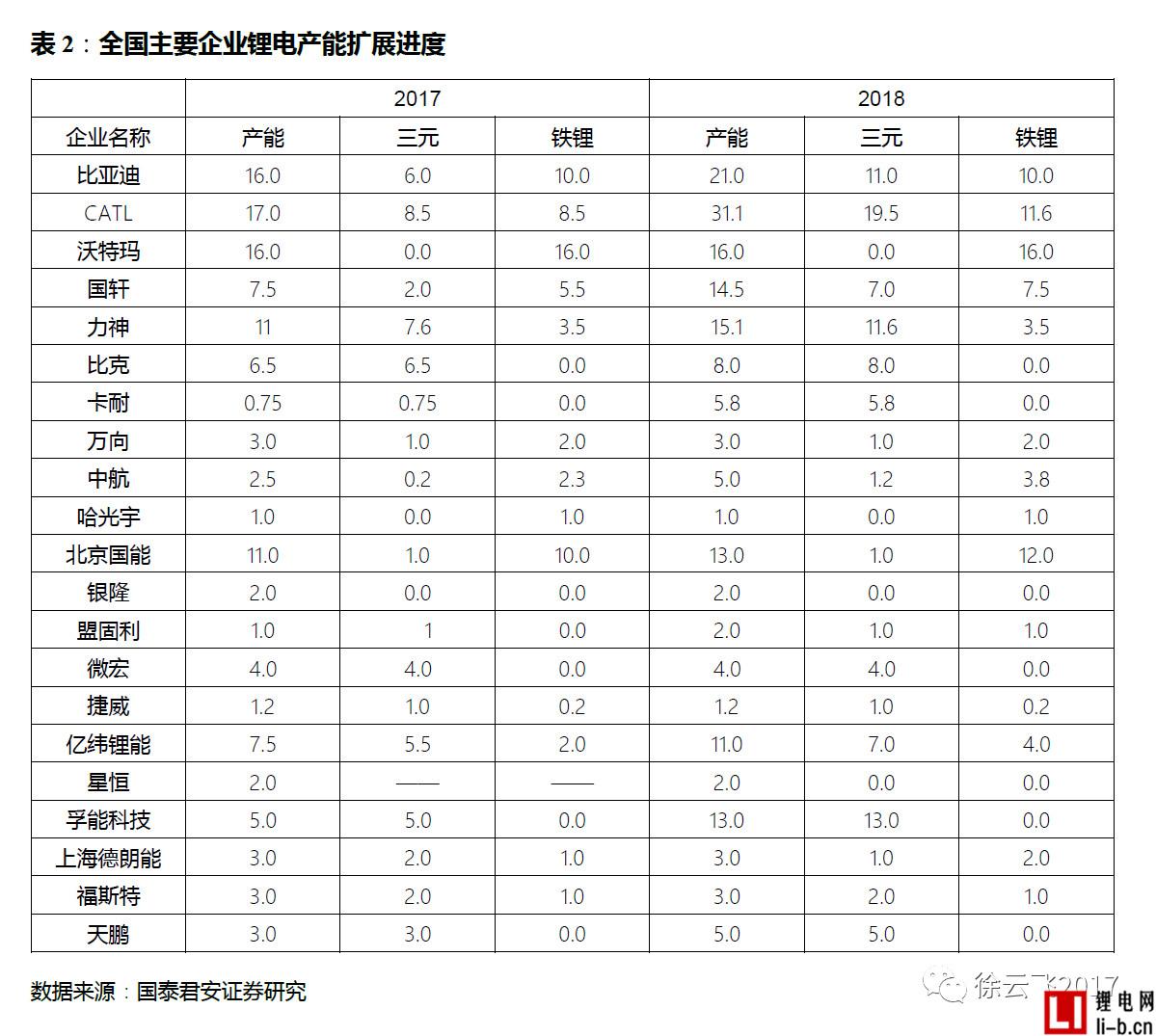
4. The expansion of the midstream and the full rise of the global supply
4.1. Unicorn CATL continues to expand, hitting the global giant throne
CATL's total production capacity in 2017 reached 17.09GWh, of which 8.5GWh is ternary lithium battery, and the main material system is ternary 532/622. Currently, 811 system battery is under research and development, and it is expected to be mass-produced next year. The production capacity is expected to reach 31.5GWh in 2018, 45.9GWh in 19 years, and 54GWh in 2020.
The base is mainly concentrated in Ningde, Fujian, Xiangyang, Jiangsu, and Xining in Qinghai.
Ningde Base: Fujian Ningde is the main production base. In 2017, the production capacity of Ningde Base reached 15GWh. The company's listed investment is the Ningdehu West Lithium-ion power battery production project. The planned third-phase capacity is 24GWh, and the company's production capacity will reach 50GWh by 2020. Therefore, it is expected that the production capacity of Ningde Base will reach 31GWh in 2018.
Ningde Base: The capacity of soft pack is expected to be 1-2GWh. Soft pack battery is the main product of the company's continuous expansion of international customers. With the increasing recognition of soft-battery battery technology routes by international customers such as Daimler and Nissan, the company has strengthened its research and development efforts in soft-package batteries. Currently, there are 3 soft-envelope lines, two of which are soft packs. Test line, the system energy density is about 250 wh/kg. Among them, the soft pack battery is expected to be initially mass-produced in 19 years, which is expected to be around 1-2GWh.
Jiangsu Xiangyang Base: In September 2016, the company invested 10 billion yuan to build, with a planned total production capacity of 10GWh, and is expected to reach 5GWh in 2018. At present, the company's main material suppliers, such as Kodali, have already provided corresponding factories near the Xiangyang base to provide supporting capacity.
Qinghai Base: After the first phase of Qinghai's technical transformation, the annual output of 2GWh battery, the second phase of 4.26GWh has completed the construction of the plant and some equipment orders at the end of 17th, and is expected to reach production in 18-19 years.
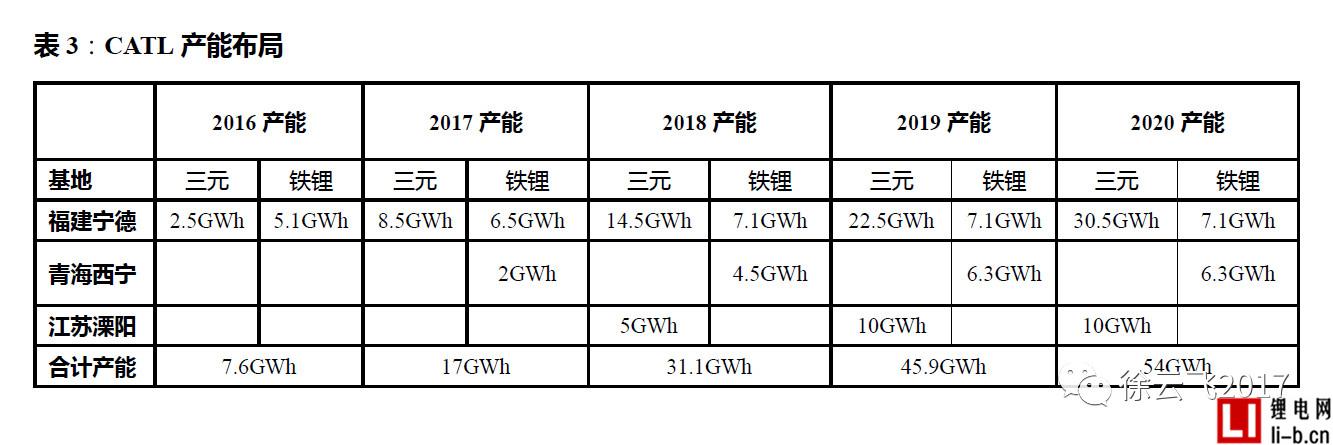
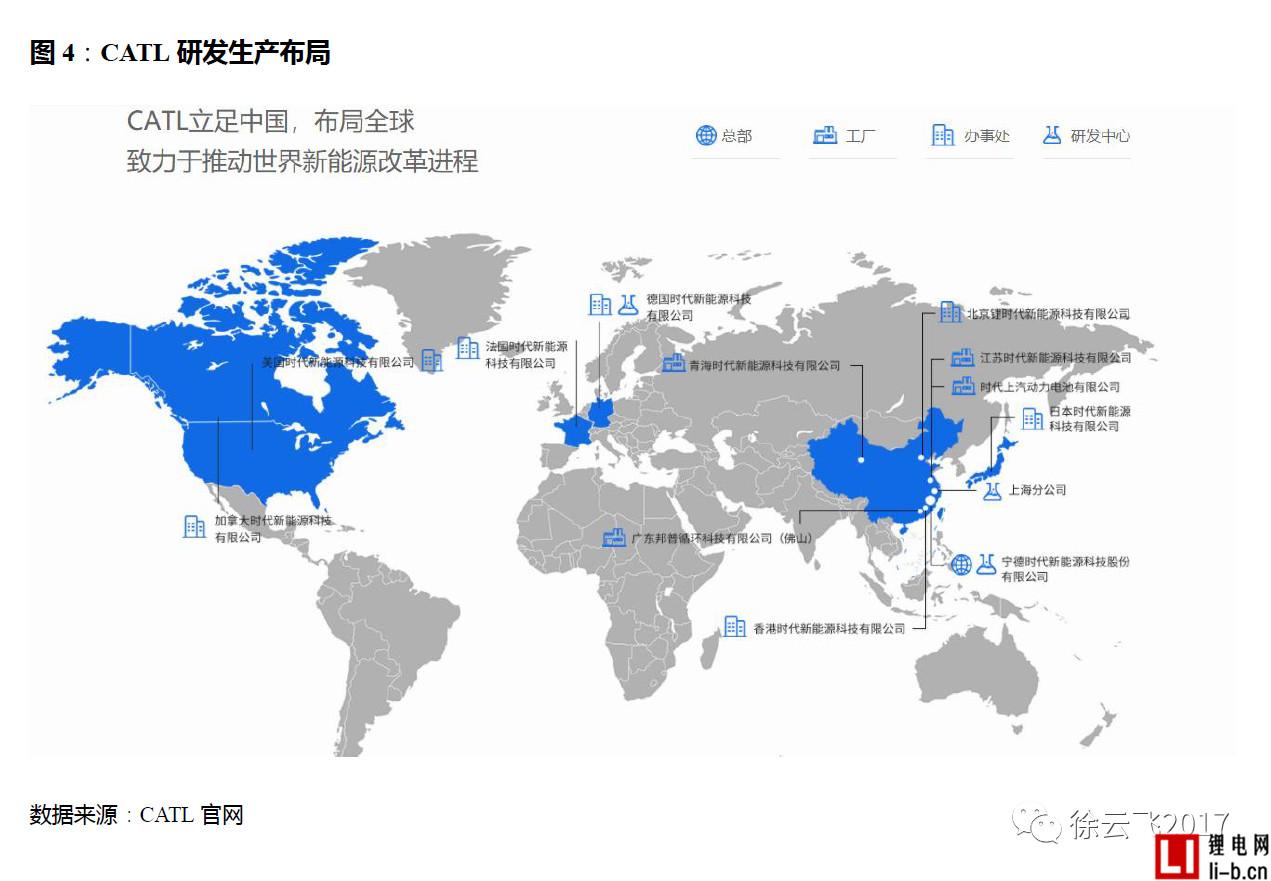
4.2. BYD split, expecting ternary force
The technical route is in a fast switch, and the ternary supply is worth looking forward to. BYD's 17-year total capacity has reached 16GWh, of which LFP capacity has reached 10GWh, ternary battery capacity has reached 6GWh, ternary capacity has continued to expand, and the capacity of ternary battery in Qinghai 10Gwh has been expanded in 17 years. It is estimated that the full production time will be 2019.06 months. In 2018, the planned production capacity is 21GWh, and in 2019, it will reach 26GWh. In 2020, the production capacity is expected to reach 39GWh.

Production base: The main production areas are mainly in Shenzhen Kengzi and Huizhou, and in Qinghai and other places, new production bases are also being built.
The pothole base has a capacity of 14GWh. In 2016, BYD's automation production base was built in Shenzhen. The project is divided into two phases. The power lithium battery capacity is 6GWh and the expansion capacity is 14GWh.
Huizhou base capacity is 2GWh. In 2011, a capacity of 2GWh of LFP lithium battery was built in Huizhou.
The production base in Qinghai is a Sanyuan factory with a production capacity of 10GWh. It is located in Nanchuan Industrial Park and Haidong Linkong Park of Xining Economic Development Zone. The total planned capacity of ternary lithium battery is 10GWh. The project was started in 2017 and is expected to be fully produced in June 2019. At present, Huatai Automobile Taifeng has been in the vicinity (the production capacity of cathode materials above 5GWh).
4.3. Guoxuan High-Technology - Powerful ternary high nickel, sprint first echelon
The pace of capacity expansion is fast, and multi-base synchronization is progressing. Guoxuan Hi-Tech's main product is a square lithium iron phosphate battery. It has a capacity of ternary lithium battery for 16 years. At present, customers in bus and passenger cars basically cover mainstream car companies. The company is accelerating the development of the ternary 622 power lithium battery. The company's production line at the Minjiang Material Base ensures that Sanyuan 622 can be self-supplied in the second half of the year. In the future, the 622 production line can be switched to the 811 production line. NCM811 is expected to be put into operation at the end of 2019 and early 2020.
In 2017, the production capacity is 7.5GWh, the lithium iron phosphate capacity is 5.5GWh, and the ternary capacity is 2GWh. 2018 is the key year for the company to accelerate the release of production capacity. It is expected to increase by 7GWh, of which Hefei Phase IV will increase 5GWh ternary 622 capacity, and Lujiang and Tangshan will increase 2GWhLFP capacity, reaching a total of 14.5GWh by the end of 18. The rest of the production areas include Kunshan, Nanjing, Nanjing, and Tangshan Phase I (under construction).
There are three factories in Hefei headquarters, and the layout of the opening area is 5GWh. It is expected to be put into operation in September 18th. Hefei No. 3 Plant has just started production and produces 43Ah batteries.
The Qingdao plant is the Sanyuan 622 production line. The main product is the 38Ah battery, which is mainly supplied to the Beiqi EC180, and then other models.
Nanjing is 1 GWh of lithium iron phosphate.
Lijiang River is a production line with 1GWh cylindrical batteries.
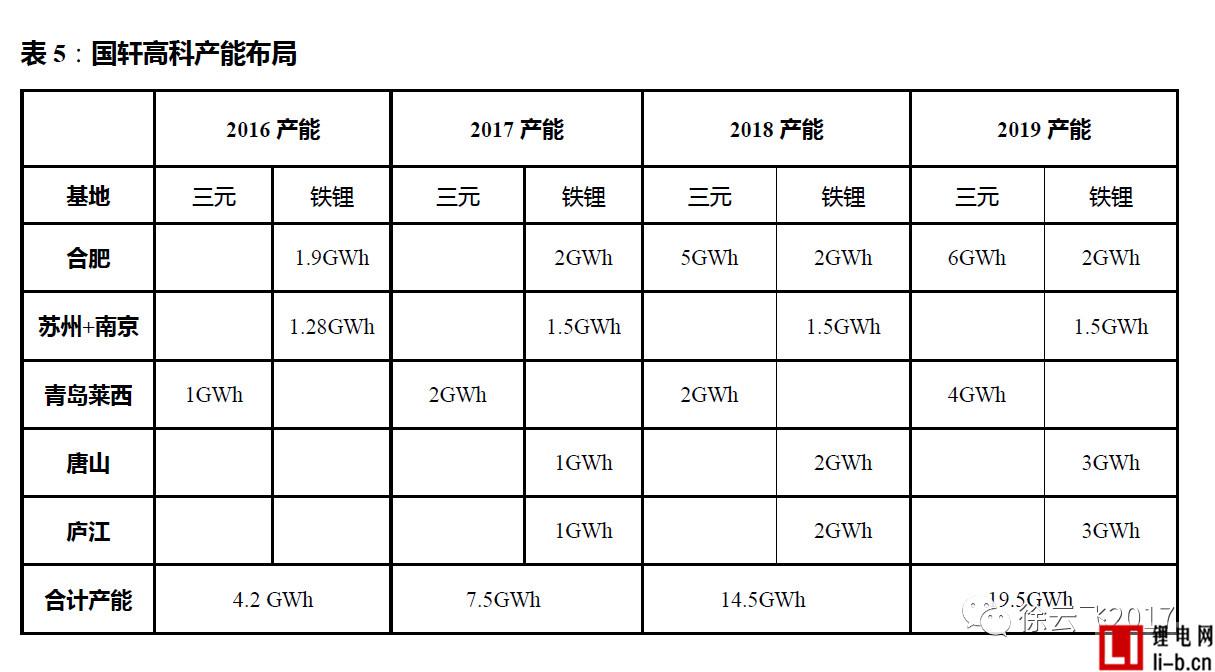
4.4. Lishen - relying on 21700 technology, power expansion
Lishen has accumulated a lot of strength and made a force to deploy 21,700 capacity. The battery type is more comprehensive, cylindrical power and consumption, square hard shell power battery. The cylindrical technology ranks the top three in China, and the 21700 production line is the earliest production line with the largest capacity in China. The model of the square battery is gradually developing to large capacity. The main products are 51AH, 76AH, 43AH, and the products above 100AH will come out later.
According to the strategic plan of “one hospital, two districts and five bases”, the company will focus on the production capacity of East China. The current production capacity is 10GWh in 17 years. The main production bases are Tianjin, Qingdao, Suzhou, Mianyang and Wuhan. It is estimated that the production capacity will reach 15GWh (7.5GWh square LFP+2.4GWh ternary square + 5.2GWh ternary cylinder) in 2018, and it will reach 30GWh in 2020.
Tianjin Headquarters has a total capacity of six phases. The cylinder has a capacity of 1.2GWh for 18650-type cylindrical batteries, 3.5GWh for square LFP aluminum shells, and a total of 2.4GWh ternary square capacity for Tianjin Phase VI of about 7GWh.
Suzhou has a total production capacity of 4GWh, mainly based on 21700-type cylinders. The first phase started construction on April 15, 2016, and was officially completed and put into operation on July 20, 2017.
Qingdao's capacity planning is 4GWh, and Qingdao's production line is mainly 100Ah large-capacity square LFP, which is expected to be put into production in 2018.
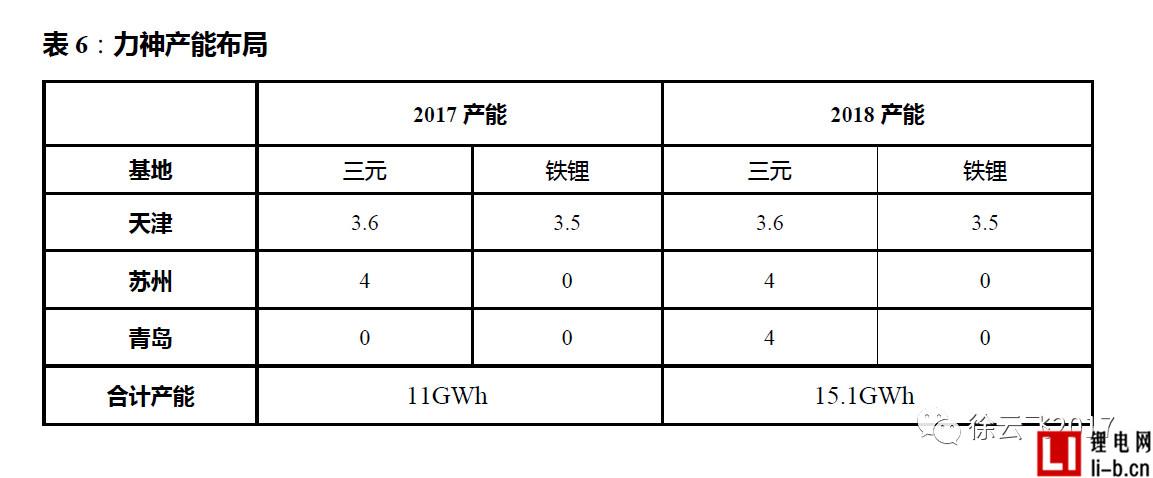
4.5. billion latitude lithium energy
The company's production capacity at the end of 2016 is 2GWh. The company's 17-year production capacity is about 7GWh, and the 18-year production capacity has increased to 9GWh. The main reason is that Jingmen has added 1GWh ternary square and 1GWh of lithium iron phosphate. All production capacity is divided into: 1GWh soft-clad laminate, 3.5GWh three. Meta battery, 4.5GWh lithium iron phosphate battery. It is expected to reach 11GWh in 19 years and 22GWh in 2021.
Production base:
Hubei Jinquan production base is divided into north and south factory areas.
North District: At the end of 2016, the capacity of 2.5 GWh of LFP square aluminum shell battery will be built. One of them has 0.5GWh, the second plant has 1GWh, and the third plant has 1GWh.
Southern District: Planning 7GWH. Cylindrical power battery (three yuan 18650/21700) 2.5GWh, ternary square aluminum shell (passenger car) 1GWh, lithium iron phosphate square aluminum shell (bus) 1.5GWh, square aluminum shell energy storage power battery 2.2GWh. A total of 7GWh. The ternary square aluminum shell plant is reserved for 2GWh.
Huizhou Jinsong Phase I: With 1GWh of ternary 18650 battery capacity.
Huizhou Jinniu Project: 1GWh of laminated battery capacity was built in the third quarter of 2017.
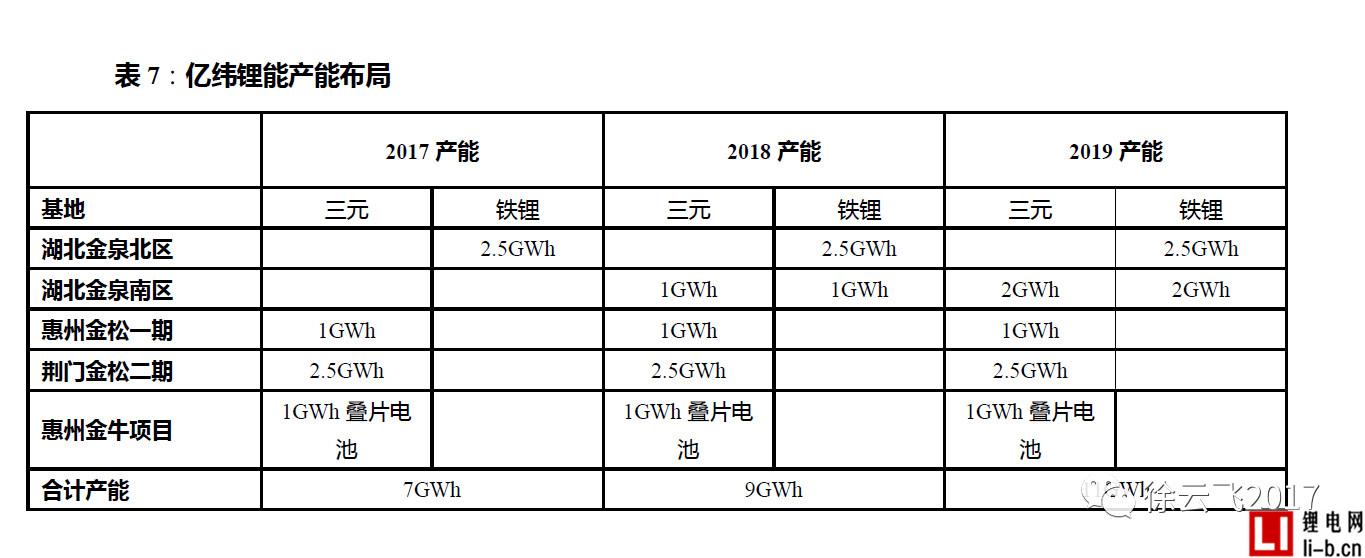
4.6. AVIC Lithium Battery
The company's 17-year capacity is 2.5GWh, of which the ternary battery is about 0.21GWh and the lithium iron phosphate is 2.23GWh. All of them are produced in Luoyang. The company's production capacity in Changzhou has reached 18 GWh in 18 years, including 3.21 GWh of ternary metal and 3.7 GWh of lithium iron phosphate. According to the company's plan, the production capacity will reach 15GWh in 2020.
The production bases are mainly Luoyang and Changzhou. The total production capacity of Luoyang Phase I and Phase III is about 2.5GWh, the total of Phase I and Phase II of Luoyang is about 1GWh, and the ratio of lithium iron phosphate to ternary is 4:1. The production capacity of Luoyang Phase III is mainly iron and lithium, reaching 1.54GWh, of which 1.5GWh of lithium iron phosphate and 0.04GWh of ternary.
Changzhou: The newly built capacity is mainly in Changzhou, with a total of 12GWh. Changzhou Phase I plans 2.5GWh, including 1GWh ternary and 1.5GWh lithium iron phosphate battery, which was started in the first half of 2017 and is expected to be fully produced in 2018. The 5GWh ternary lithium battery project in Changzhou Phase II is expected to reach production in 19 years. In the later period, there are still plans for Changzhou Phase III of about 4.5GWh.
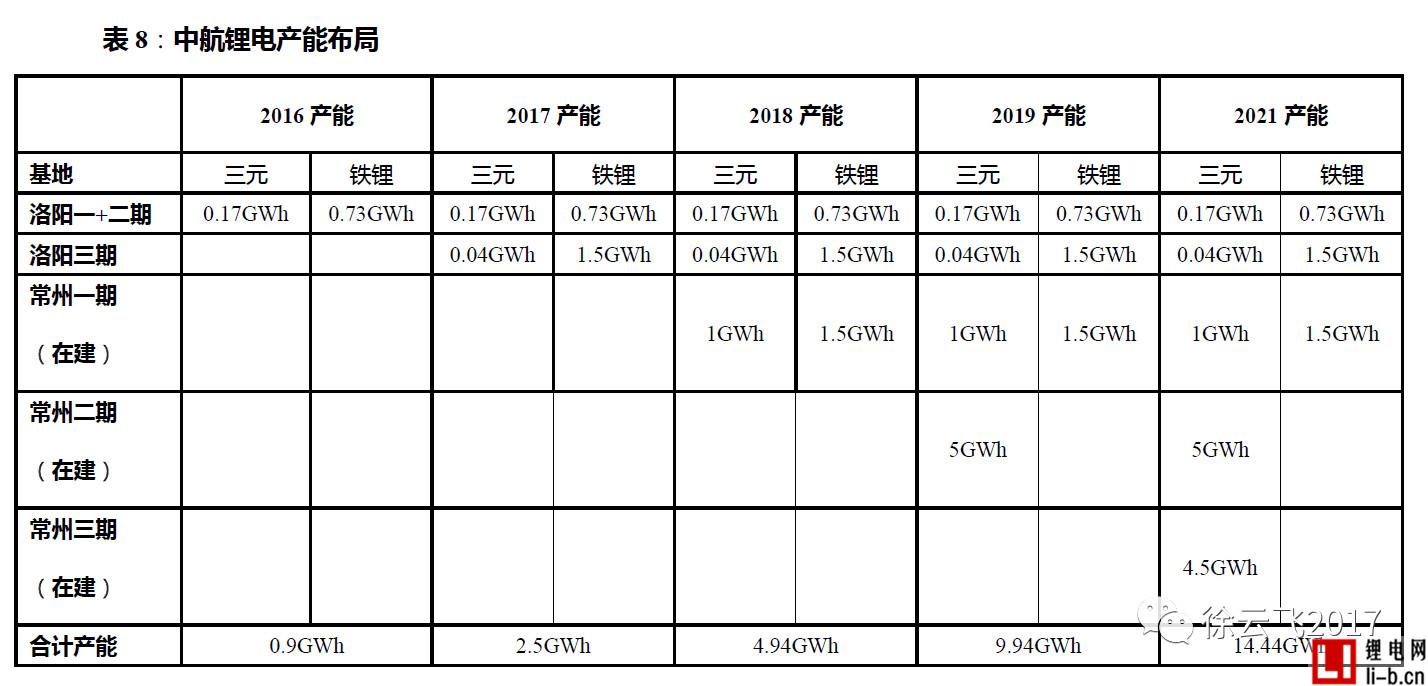
4.7. National Battery
In 2017, the total production capacity reached 11GWh. At present, the capacity of lithium iron phosphate soft pack battery accounts for 90%, and the rest is ternary soft pack . It is expected to continue expansion in Zhengzhou in 2018, with a total capacity of 13GWh. The company plans to increase its total production capacity to 2020. 20GWh, the future production of national lithium iron phosphate battery and ternary battery will be flexibly adjusted according to market conditions, the ratio is about 6:4.
Production base: The company accelerated its nationwide strategic layout in 2017. The completed bases include Beijing, Zhengzhou, Xiangyang, Chongqing, Haining, Nanchang, Xinyu and Longyan. Beijing mainly focuses on R&D and pilot tests, and the production capacity of lithium iron phosphate is about 1GWh. Zhengzhou is the main production base. At present, the capacity of lithium iron phosphate soft pack reaches 5Gwh, supporting Yutong and other bus companies. The rest of Xinyu, Xiangyang and Haining have a production capacity of around 400 million Ah. Longyan base produces ternary soft pack batteries with a capacity of 1GW. Chongqing is only a pack factory.
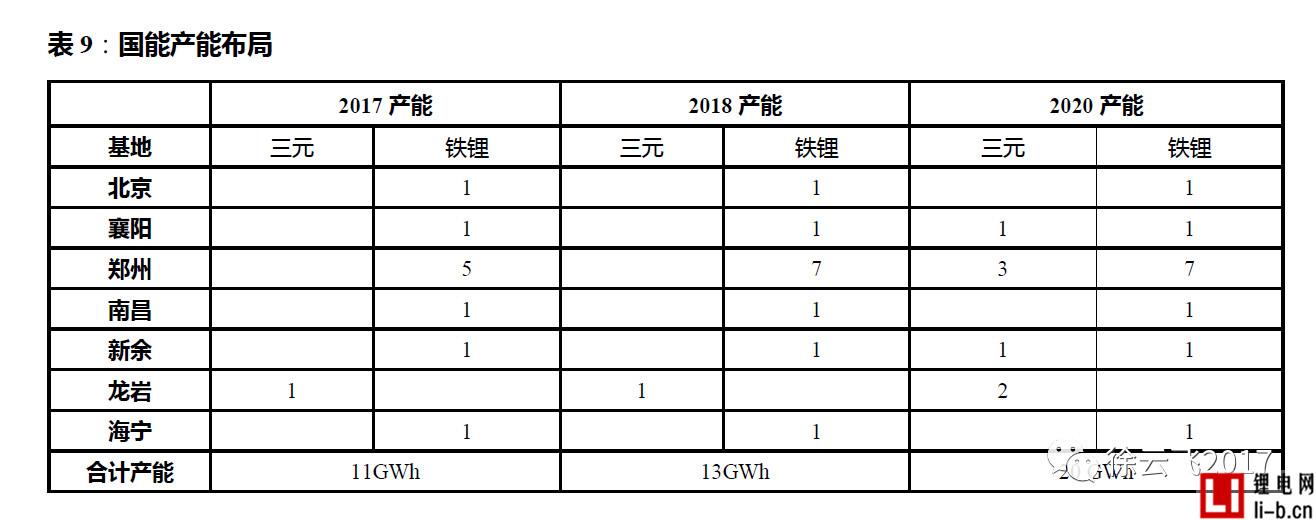
4.8. Fu Neng Technology
The company is a domestic soft pack leader. In 2017, the company's capacity is about 5GWh of ternary soft pack batteries. In 2018, the estimated capacity is up to 13GWh. Beijing Shunyi's planned 8GWh capacity is expected to be put into operation from the end of the year to 19th. In addition, the production capacity of 10GWh in the third phase of Zhangzhou will be started in 18 years, and it is expected to start in 19 years.
The production base mainly includes Zhangzhou and Beijing. Among them, the production base in Zhangzhou began to be built in 2009. Now the first phase of the second phase has a total of 5GWh, and the third phase is planned to be 10GWh, followed by 10GWh capacity, and finally 35GWh capacity. The third phase of 10GWh production is in the early stage of preparation, and reserves for 19 years of production capacity.
The Beijing Shunyi Base plans to produce 8GWh of capacity, and in 2018 it has started infrastructure construction and is expected to start production in 18-19. It mainly meets the supporting demand of BAIC, and the subsequent excess capacity is expected to radiate the demand of surrounding car companies.

4.9. Carne New Energy
The company specializes in the production and sales of power lithium-ion soft pack batteries. In 2017, the capacity of Sanyuan soft pack battery is 0.75GWh, mainly distributed in Shanghai base capacity of 0.25Gwh, Nanchang base capacity is 0.5Gwh, and will continue to expand production in 2018. After the production capacity of Nanjing is reached, it is expected to reach 5.8Gwh or more by the end of the year. Capacity is expected to reach 13.2GWh in 2019.
Production base: The company has one technology center in Nanjing, two overseas technology centers in Japan and North America, and five production bases (Shanghai, Nanchang, Guangxi, and two core bases).
Nanjing: The first-stage production capacity is 4GWh and the second-phase planned production capacity is 6GWh. It is expected to reach production at the end of 18 years and early 19th, reaching 10GWh production capacity.
Liuzhou: Capacity planning 1GWh, production in May 2018, the capacity of Liuzhou base is expected to continue to expand to 2GWh.
Shanghai: The production capacity is 0.24GWh, and the planned capacity in the future can reach 0.45GWh.
Nanchang: The production capacity is 0.54GWh, and the planned production capacity in the future can reach 0.74GWh.
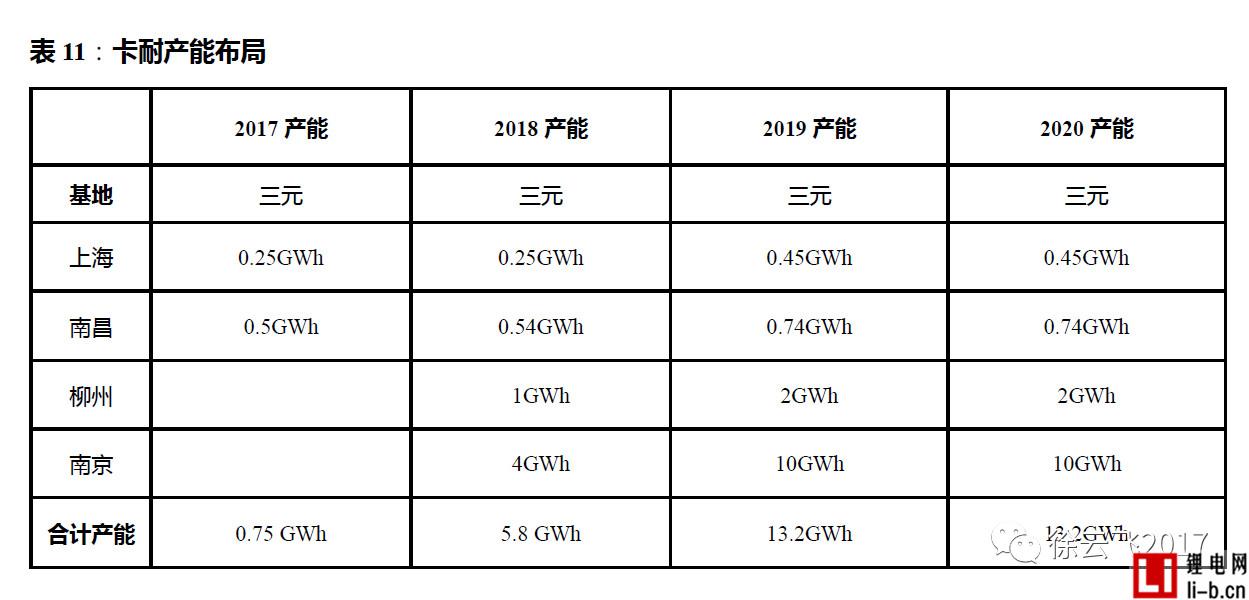
4.10. Bick
The company is a high-quality company in the domestic ternary cylinder field. In 2017, the production capacity of Sanyuan cylinder reached 5GWh, including 811 production capacity of 1GWh. In 2018, the company's production capacity reached 8GWh, of which 811 batteries can be up to 4GWh. It is expected that the production capacity will reach 12GWh in 2019. It will reach 20GWh in 2020.
Production base: It is mainly concentrated in two production bases in Shenzhen and Zhengzhou. The Shenzhen base is mainly engaged in consumer-type cylindrical batteries, mainly focusing on ternary 18650 lithium batteries, with a production capacity of 3GWh. The Zhengzhou base has been built since 2013. It mainly produces power lithium batteries. The current production capacity is 4GWh. Currently, 6 production lines are planning to do 21700.
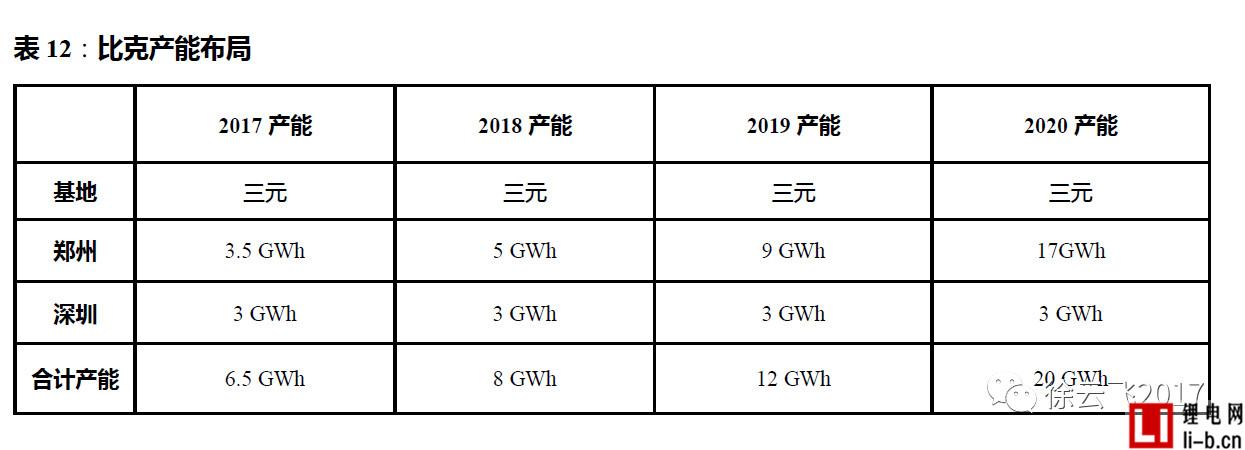
5. The passenger car supply chain pattern has taken shape
We believe that the domestic power lithium battery head pattern is basically clear, but the growth of specific enterprises still needs to follow-up observation, and the supply relationship between lithium battery and vehicle enterprises basically shows a prototype.
1) The production capacity of the head enterprise has basically met the demand for vehicle sales throughout the year. At present, the production capacity of the top ten enterprises is 87GWh. If the annual sales volume is 1 million units, 250,000 commercial vehicles and 750,000 new energy passenger vehicles are calculated. A total of 48GWh of power lithium batteries are required. The market share of head lithium battery giants in the commercial vehicle sector is relatively low, and a large number of small and medium-sized lithium battery companies are competing for competition. The 34GWh power lithium battery of the passenger car enterprise has been basically satisfied by the top ten lithium battery companies.
2) There are many supporting modes of lithium battery, which can eliminate the transportation radius and reduce the cost. Participation in equity or joint ventures, and win-win cooperation. Guoxuan Hi-Tech began to transform its ternary in 2016 and participated in the acquisition of EC180 and other models by participating in BAIC New Energy (accounting for 3.75% in 2016). In addition to the extensive binding of passenger cars and commercial vehicle customers, CATL joined hands with the Group in May, the newly established power battery company and the battery PACK company, respectively, the era of SAIC Power Battery Co., Ltd. (CATL holding 51%) and SAIC era power battery System Co., Ltd. (CATL holds 49%). Deeply bound to SAIC through clear division of interests and division of labor.
3) The lithium battery industry cluster base and supporting construction around the car factory are underway. Beiqi supply chain: CATL, Guoxuan Hi-Tech, Fueng Technology, Pride and so on. Beiqi New Energy Automobile Manufacturing Base is Daxing Mining Town, and Pride is a core pack supplier in the same industrial zone. The battery company that is currently entering the supply system is investing in the production of power lithium batteries in Shunyi District, closely surrounding the production capacity of BAIC New Energy. Others such as CATL and SAIC are also actively reducing shipping distances and accelerating production.
SAIC supply chain: CATL, Wanxiang A123, CITIC Guoan, etc.
Geely supply chain: CATL, Guoxuan Hi-Tech, Boston, Polyfluoro, Ha Guangyu, etc.
Jianghuai supply chain: Guoxuan Hi-Tech, Tianjin Lishen, Huasheng Power, etc.;
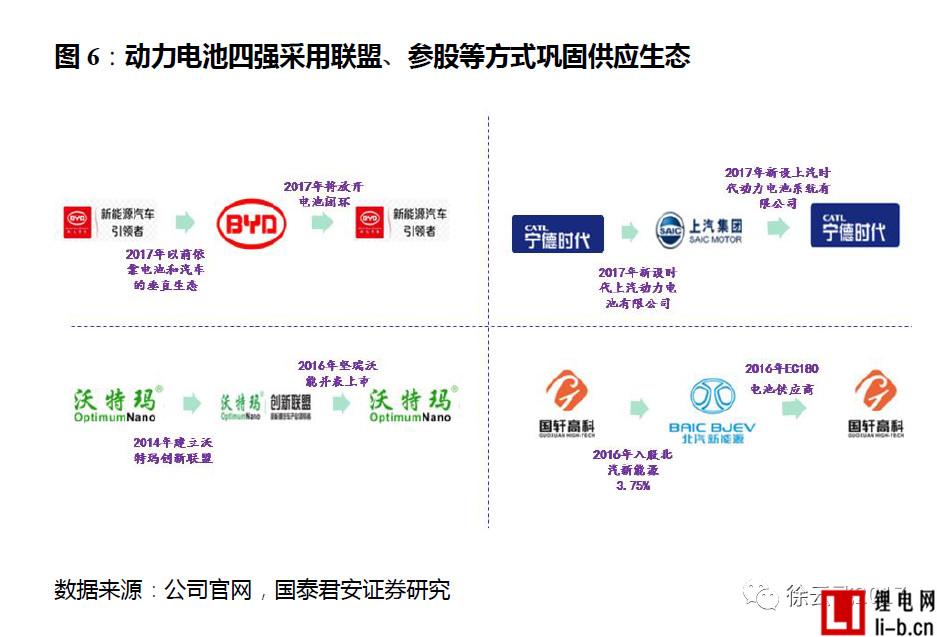
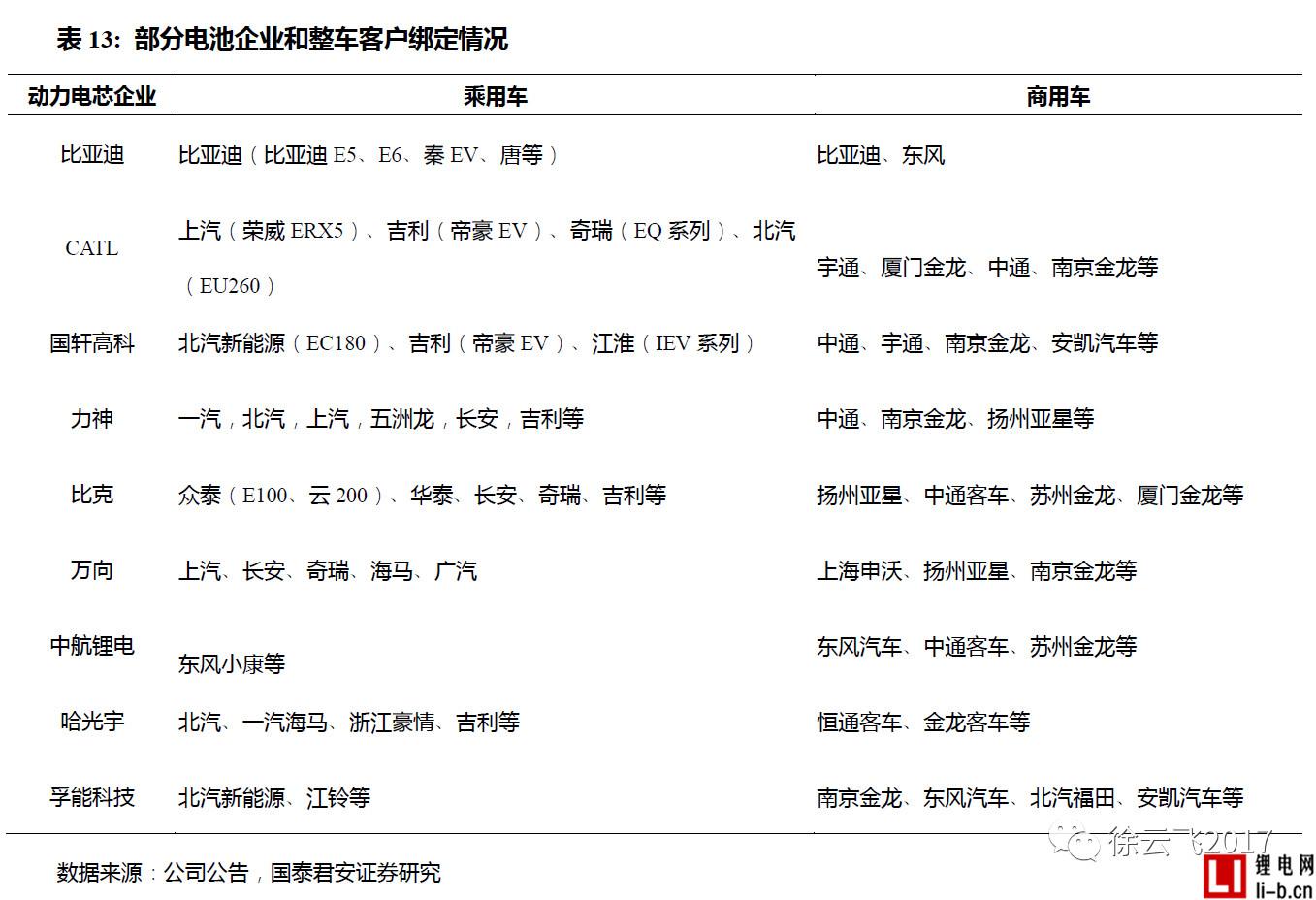
6. Risk warning
New energy vehicles and power battery sales were lower than expected. The sales of new energy passenger vehicles in 18 years are not in short-term expectations, and the decline in production of downstream automakers affects battery demand, which in turn leads to slow sales of battery products.


 在线地图
在线地图 收藏本站
收藏本站



















